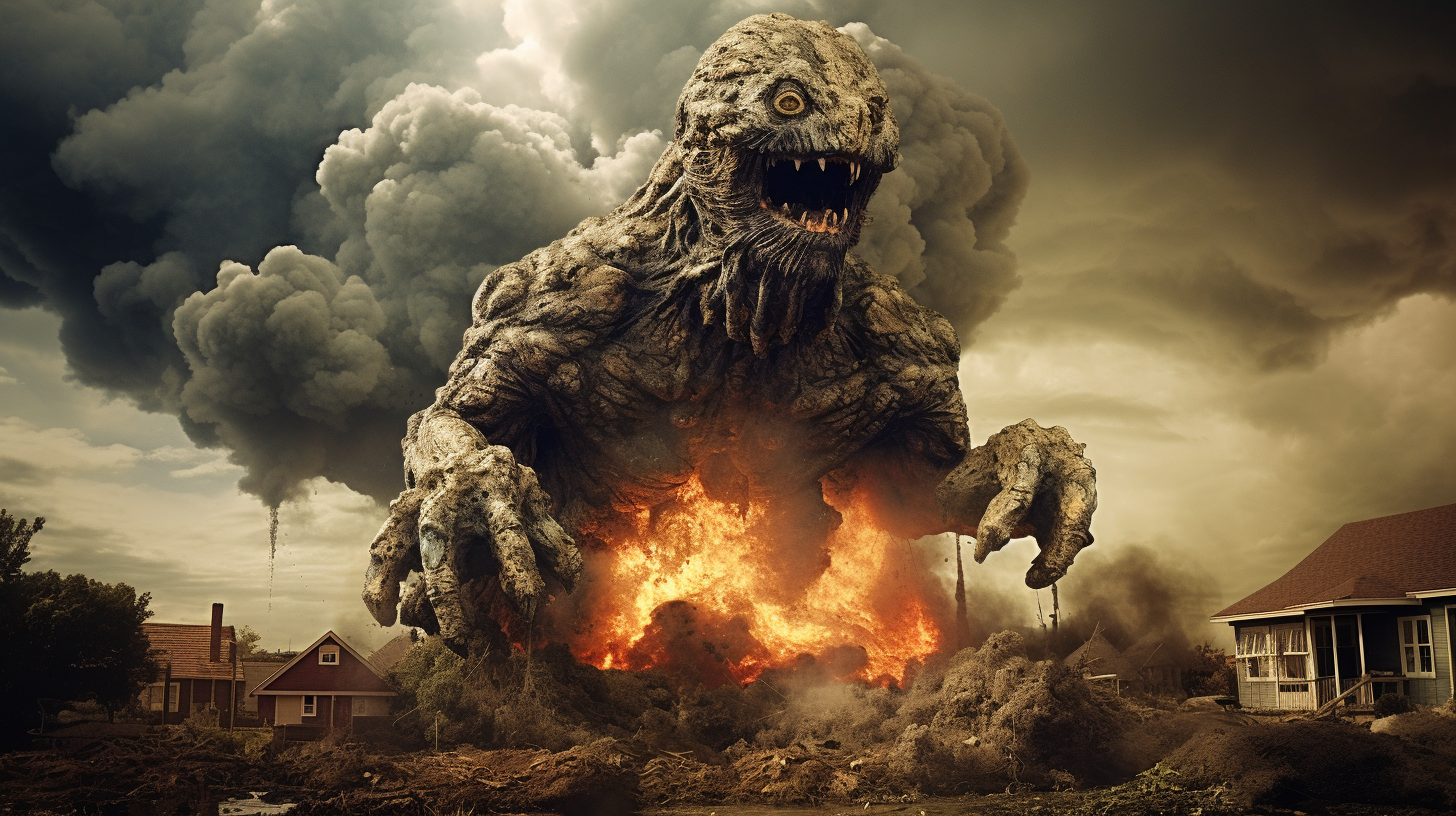In the bleak landscape of environmental degradation, where dry riverbeds and desolate fields lie as stark testaments to our collective oversight, new beasts emerge from the shadows – the Methane Monsters. These beasts, not of flesh and bone, but of gas and ruin, lurk beneath our feet, poised to strike with a potency that could mirror the opening of pandora’s box.
Decomposing organic matter, trapped for millennia under permafrost and ocean sediments, hold vast stores of methane – a greenhouse gas with a heat-trapping capability 25 times greater than carbon dioxide over a 100-year period. As the Earth warms and the icy grip retreats, the Once-Dormant Methane Monsters Awaken.
Imagine, if you will, a day where the ticking time bombs of methane clathrates in the Arctic Ocean decide to synchronize their alarms. The result? An explosive release that could catapult the planet into an accelerated warming scenario, rendering efforts to reverse climate change futile, our world transformed into an oven with the dial turned too far.
Scientists have been sounding alarms about these sinister sleepers, warning of a potential methane time bomb that could release gigatons of carbon into the atmosphere. But where alarm bells ring, action often falls deaf. The cry for urgent intervention echoes in the void, with the hands that could dismantle the bomb tangled in the apathy of bureaucracy and economic interests.
A chorus of ice-laden groans and crackling permafrost amplify the narrative of our previous encounters – ‘When the Rains Never Came‘ and ‘Resilience or Relinquishment – Societies at the Brink‘. They serve as a prelude that foreshadows the catastrophic symphony these Methane Monsters could conduct if unchecked.
Yet, in this grim march towards devastation, there lies a glimmer of human ingenuity and resolve. There are those among us laboring to turn the tide, be it through innovative sustainability practices highlighted previously or harnessing the beast itself for energy. The Methane Monsters could indeed be tamed, but the question persists: do we possess the will to wield the reins?
In a tapestry woven with stories of the desolate and, paradoxically, the hopeful, we find individuals like Dr. Eiko Tama, a leading researcher in methane hydrate recovery. Dr. Tama suggests that the controlled extraction of methane could be the silver bullet we are desperate for. ‘By carefully releasing methane from its icy prison, we can not only prevent the abrupt and disastrous emissions, but also channel this energy towards lessening our reliance on more harmful fossil fuels,’ explains Tama.
And yet, with every innovative solution comes a caveat – the threat of triggering an uncontrolled release, beckoning the question of whether we are gambling with our future or investing in our survival.
The narrative ahead is turbulent and unwritten, but two things remain clear: the Methane Monsters are real, and their slumber grows ever restless. As we stand over these ticking time bombs, the paths of resilience or relinquishment stretch out before us. Will our actions reflect a society that stands its ground against the impending explosion, or one that has thrown in the white flag?
In this dystopian dance, where society balances precariously on the knife-edge of destiny, the Methane Monsters wait with bated breath. Our collective choices will dictate whether these monsters of methane become our doom or our deliverance. The clock ticks on, and only time will tell the fate that awaits us.
